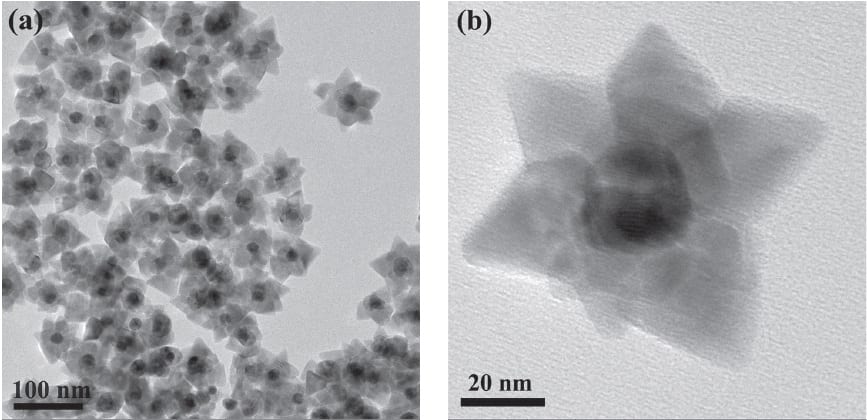Metallic and semiconductor elements have been combined to create these lovely flower-like nanoparticles by researchers collaborating across China and Australia. The hybrid nanocrystals are composed of gold cores covered in nickel shells, with ZnO nanopyramids forming the ‘petals’.
Hybrid Au–ZnO particles are already well known for their photocatalytic activity but, in order to apply such particles commercially and on a large scale, the problem of having very expensive core components must be addressed. Incorporating a relatively cheap magnetic component enables the possibliity of extracting these core materials after the catalytic reaction is complete, which begins to alleviate the problem and is a step toward such materials being re-usable.
It does, however, introduce a new problem: the large lattice mismatch between ZnO and typical magnetic materials impedes charge transfer across the interface, which is critical for good photocatalytic performance.
Using a seeded growth mechanism, these researchers were able to encourage semiconducting ZnO nanopyramids to form on the facets of their asymmetric Au@Ni seed particles, demonstrating the crucially heteroepitaxial growth of ZnO on the {111} crystal facets,which allows good charge transfer at the interface.
Adjusting the amounts of gold and nickel precursors allows full control over the surface plasmon resonance and magnetic properties of the final particles, and the suppression of electron–hole recombination is evidenced. Hybrid particles with such broad functionalities will no doubt find many uses beyond photocatalysis.

















